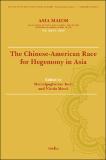Files in this item
Kyrgyzstan 2015 : a country adrift?
Item metadata
| dc.contributor.author | Fumagalli, Matteo | |
| dc.date.accessioned | 2017-09-19T09:30:09Z | |
| dc.date.available | 2017-09-19T09:30:09Z | |
| dc.date.issued | 2016-03-01 | |
| dc.identifier | 251088111 | |
| dc.identifier | 1efb0e7a-2612-4ce1-8512-45fc73dae541 | |
| dc.identifier.citation | Fumagalli , M 2016 , ' Kyrgyzstan 2015 : a country adrift? ' , Asia Maior , vol. XXVI , pp. 469-481 . < http://www.asiamaior.org/2016/03/01/kyrgyzstan-2015-a-country-adrift/ > | en |
| dc.identifier.issn | 2385-2526 | |
| dc.identifier.other | ORCID: /0000-0002-1451-2088/work/37190711 | |
| dc.identifier.uri | https://hdl.handle.net/10023/11691 | |
| dc.description.abstract | In August 2015 Kyrgyzstan completed the accession process to the Eurasian Economic Union (EEU). Bishkek now firmly gravitates in Russia’s orbit. In October parliamentary elections returned a six-party national assembly, where the president, Almazbek Atambayev, could count on a strong pro-presidential power base, consisting of the «president’s party», the Social-Democratic Party of Kyrgyzstan (SDPK), and the new «Kyrgyzstan» party. Suggesting that Kyrgyzstan is a country adrift might appear counter-intuitive. However, the impression resulting by an in-depth analysis is that the Central Asian country’s political system and society are presently floating, without trajectory or leadership. In fact, the government has been unable to resolve the never-ending controversy over the Kumtor gold mine. The authorities are also showing signs of preoccupation due to the threat posed by the Islamic State (IS). This being the situation, the chapter reviews two economic issues that largely shaped political and social developments in 2015: the first is the accession to the Eurasian Union and the effects that the economic crisis in Russia had on the Kyrgyz economy. The second is the turbulence surrounding Kumtor. Next, the chapter analyzes the results and effects of the October parliamentary elections. The remainder of the chapter focuses on some controversial legislative initiatives and concludes by discussing the threat posed by the IS to Kyrgyzstan. | |
| dc.format.extent | 1335446 | |
| dc.language.iso | eng | |
| dc.relation.ispartof | Asia Maior | en |
| dc.subject | Kyrgyzstan | en |
| dc.subject | Transition | en |
| dc.subject | Elections | en |
| dc.subject | Eurasian Union | en |
| dc.subject | Political instability | en |
| dc.subject | JZ International relations | en |
| dc.subject | SDG 16 - Peace, Justice and Strong Institutions | en |
| dc.subject.lcc | JZ | en |
| dc.title | Kyrgyzstan 2015 : a country adrift? | en |
| dc.type | Journal article | en |
| dc.contributor.institution | University of St Andrews. School of International Relations | en |
| dc.description.status | Peer reviewed | en |
| dc.identifier.url | http://www.asiamaior.org/2016/03/01/kyrgyzstan-2015-a-country-adrift/ | en |
This item appears in the following Collection(s)
Items in the St Andrews Research Repository are protected by copyright, with all rights reserved, unless otherwise indicated.

